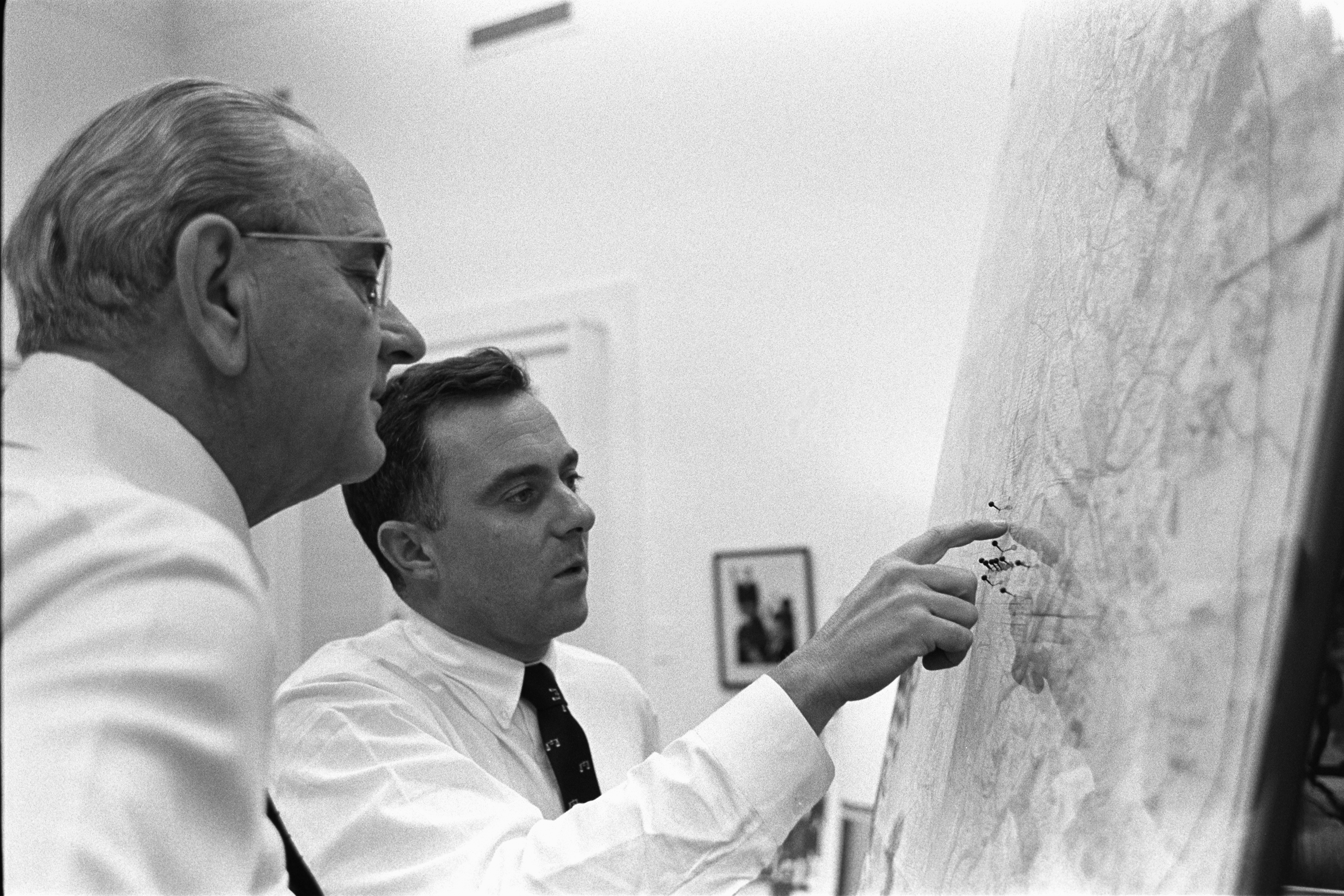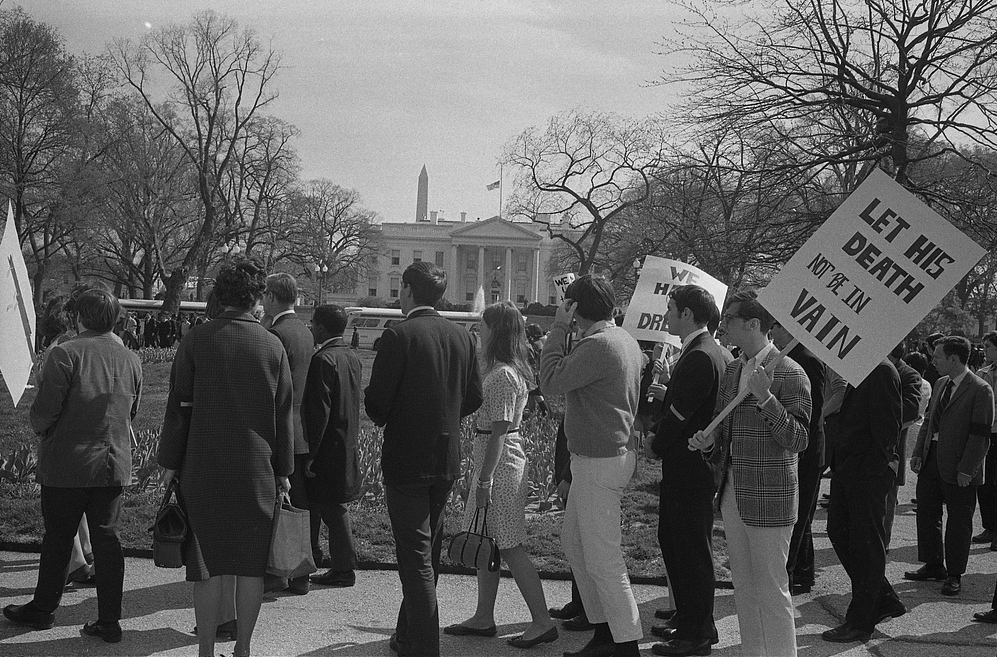|
1968 Pittsburgh Riots
The 1968 Pittsburgh riots were a series of urban disturbances that erupted in Pittsburgh on April 5, 1968, following the assassination of Martin Luther King. Pittsburgh, along with 110 other cities, burned for several days and 3,600 National Guardsmen were needed to quell the disorder. The neighborhoods most impacted were the Hill District, North Side, and Homewood, with casualties including one death and 36 injuries. Over 100 businesses were either vandalized or looted with arsonists setting 505 fires. After six days, order was finally restored on April 11, with property damage surpassing $600,000 (equivalent to $ in ) and 1,000 arrests being made by law enforcement. Many of the areas affected by the disorder would never fully recover in the following decades. See also * List of incidents of civil unrest in the United States Listed are major episodes of civil unrest in the United States. This list does not include the numerous incidents of destruction and violence associat ... [...More Info...] [...Related Items...] OR: [Wikipedia] [Google] [Baidu] |
King Assassination Riots
The King assassination riots, also known as the Holy Week Uprising, were a wave of civil disturbance which swept the United States following the assassination of Martin Luther King Jr. on April 4, 1968. Many believe them to be the greatest wave of social unrest the United States had experienced since the Civil War. Some of the biggest riots took place in Washington, D.C., Baltimore, Chicago, and Kansas City. Overview Causes The immediate cause of the rioting was the assassination of Martin Luther King Jr. King was not only a leader in the civil rights movement, but also an advocate for nonviolence. He pursued direct engagement with the political system (as opposed to the separatist ideas of black nationalism). His death led to anger and disillusionment, and feelings that, thereafter, only violent resistance to white supremacy could be effective. Riots The protesters were mostly black; not all were poor. Middle-class black people also demonstrated against systemic inequality. ... [...More Info...] [...Related Items...] OR: [Wikipedia] [Google] [Baidu] |
Assassination Of Martin Luther King, Jr
Martin Luther King Jr., an African-American clergyman and civil rights leader, was fatally shot at the Lorraine Motel in Memphis, Tennessee, on April 4, 1968, at 6:01 p.m. CST. He was rushed to St. Joseph's Hospital, where he died at 7:05 p.m. He was a prominent leader of the civil rights movement and a Nobel Peace Prize laureate who was known for his use of nonviolence and civil disobedience. James Earl Ray, a fugitive from the Missouri State Penitentiary, was arrested on June 8, 1968, at London's Heathrow Airport, extradited to the United States and charged with the crime. On March 10, 1969, he pleaded guilty and was sentenced to 99 years in the Tennessee State Penitentiary. He later made many attempts to withdraw his guilty plea and to be tried by a jury, but was unsuccessful. Ray died in prison in 1998. The King family and others believe that the assassination was the result of a conspiracy involving the U.S. government, the mafia, and Memphis police, as alle ... [...More Info...] [...Related Items...] OR: [Wikipedia] [Google] [Baidu] |
Pittsburgh Police Department
The Pittsburgh Police (PBP), officially the Pittsburgh Bureau of Police, is the largest law enforcement agency in Western Pennsylvania and the third largest in Pennsylvania. The modern force of salaried and professional officers was founded in 1857 but dates back to the night watchmen beginning in 1794, and the subsequent day patrols in the early 19th century, in the then borough of Pittsburgh. By 1952 the Bureau had a strength of 1,400 sworn officers in July 1985, 1,200 and by November 1989, 1,040. Organization The Pittsburgh Bureau of Police is part of the Pittsburgh Department of Public Safety, along with the Pittsburgh Bureau of Fire and Pittsburgh Bureau of Emergency Medical Services (PEMS). It is headed by Chief Scott Schubert appointed by Mayor Bill Peduto and approved by City Council. The Chief of Police is the top law enforcement agent of the city of Pittsburgh. In the Chiefs council are the positions of * Deputy Chief of Police Bureau * Chief of Staff of the Pol ... [...More Info...] [...Related Items...] OR: [Wikipedia] [Google] [Baidu] |
Pennsylvania National Guard
The Pennsylvania National Guard is one of the oldest and largest National Guards in the United States Department of Defense. It traces its roots to 1747 when Benjamin Franklin established the Associators in Philadelphia. With more than 18,000 personnel, the Pennsylvania National Guard is the second-largest of all the state National Guards. It has the second-largest Army National Guard and the fourth-largest Air National Guard. These forces are respective components of the United States Army and Air Force. The Pennsylvania National Guard is a part of the Pennsylvania Department of Military and Veterans Affairs, which is headed by Pennsylvania Adjutant General Major General Mark J. Schindler. It is headquartered at Fort Indiantown Gap in Lebanon County, Pennsylvania and has facilities in over 80 locations across the state. History 1700s The Pennsylvania National Guard dates back to 1747 when Ben Franklin created the Associators in Philadelphia. Having overcome the long pacifis ... [...More Info...] [...Related Items...] OR: [Wikipedia] [Google] [Baidu] |
Pittsburgh, PA
Pittsburgh ( ) is a city in the Commonwealth of Pennsylvania, United States, and the county seat of Allegheny County. It is the most populous city in both Allegheny County and Western Pennsylvania, the second-most populous city in Pennsylvania behind Philadelphia, and the 68th-largest city in the U.S. with a population of 302,971 as of the 2020 census. The city anchors the Pittsburgh metropolitan area of Western Pennsylvania; its population of 2.37 million is the largest in both the Ohio Valley and Appalachia, the second-largest in Pennsylvania, and the 27th-largest in the U.S. It is the principal city of the greater Pittsburgh–New Castle–Weirton combined statistical area that extends into Ohio and West Virginia. Pittsburgh is located in southwest Pennsylvania at the confluence of the Allegheny River and the Monongahela River, which combine to form the Ohio River. Pittsburgh is known both as "the Steel City" for its more than 300 steel-related businesses and ... [...More Info...] [...Related Items...] OR: [Wikipedia] [Google] [Baidu] |
Hill District (Pittsburgh)
The Hill District is a grouping of historically African American neighborhoods in the City of Pittsburgh, Pennsylvania. Beginning in the years leading up to World War I, "the Hill" was the cultural center of black life in the city and a major center of jazz. Despite its cultural and economic vibrancy, in the mid-1950s a substantial area was slated for redevelopment, displacing about 8,000 individuals. Geographic area The Hill District of Pittsburgh, Pennsylvania as of 2010 the area comprises Census Tracts 305 (Crawford Roberts, "Lower Hill"), 501 (Crawford-Roberts, "Middle Hill"), 506 (Upper Hill), 509 (Bedford Dwellings), 510 and 511 (Terrace Village). It is bordered by the Downtown on the west, the Strip District next to the Allegheny River and Polish Hill to the north, the Bluff (Uptown) on the southwest, and Oakland on the east and southeast. The census tract/neighborhoods noted in the Hill District are represented on the Pittsburgh City Council by the council member for Di ... [...More Info...] [...Related Items...] OR: [Wikipedia] [Google] [Baidu] |
North Side (Pittsburgh)
North Side (sometimes written as Northside) refers to the region of Pittsburgh, Pennsylvania, Pittsburgh, Pennsylvania, located to the north of the Allegheny River and the Ohio River. The term "North Side" does not refer to a specific neighborhood, but rather to a disparate collection of contiguous neighborhoods. The neighborhoods that make up the North Side of Pittsburgh include: Allegheny Center (Pittsburgh), Allegheny Center, Allegheny West (Pittsburgh), Allegheny West, Brighton Heights (Pittsburgh), Brighton Heights, California-Kirkbride (Pittsburgh), California-Kirkbride, Central Northside (Pittsburgh), Central Northside, Chateau (Pittsburgh), Chateau, East Allegheny(Pittsburgh), East Allegheny, Fineview (Pittsburgh), Fineview, Manchester (Pittsburgh), Manchester, Marshall-Shadeland (Pittsburgh), Marshall-Shadeland, North Shore (Pittsburgh), North Shore, Northview Heights (Pittsburgh), Northview Heights, Perry North (Pittsburgh), Perry North, Perry South (Pittsburgh), Per ... [...More Info...] [...Related Items...] OR: [Wikipedia] [Google] [Baidu] |
Homewood (Pittsburgh)
Homewood is a predominantly African-American neighborhood of Pittsburgh, Pennsylvania, United States, officially divided into three neighborhoods: Homewood North, Homewood South and Homewood West. Homewood is bordered on the southwest by the Martin Luther King Jr. East Busway which follows the old Pennsylvania Railroad line toward downtown Pittsburgh. Geography Homewood is located in the easternmost part of Pittsburgh. Parts of Homewood's Northern and Eastern border are shared with Penn Hills Township. Within the city of Pittsburgh, Homewood is bordered by the following neighborhoods: on the east by East Hills; on the west by Larimer; on the North by Lincoln-Lemington Belmar; and on the south by North Point Breeze. History Homewood was founded in 1832 by Judge William Wilkins. It was later annexed by the city of Pittsburgh on December 1, 1884. Homewood in the beginning held mainly estates for the wealthy; Homewood was also the Pittsburgh residence of industrialists Andrew ... [...More Info...] [...Related Items...] OR: [Wikipedia] [Google] [Baidu] |
Pittsburgh Post-Gazette
The ''Pittsburgh Post-Gazette'', also known simply as the PG, is the largest newspaper serving metropolitan Pittsburgh, Pennsylvania. Descended from the ''Pittsburgh Gazette'', established in 1786 as the first newspaper published west of the Allegheny Mountains, the paper formed under its present title in 1927 from the consolidation of the ''Pittsburgh Gazette Times'' and ''The Pittsburgh Post''. The ''Post-Gazette'' ended daily print publication in 2018 and has cut down to two print editions per week (Sunday and Thursday), going online-only the rest of the week. In the 2010s, the editorial tone of the paper shifted from liberal to conservative, particularly after the editorial pages of the paper were consolidated in 2018 with '' The Blade'' of Toledo, Ohio. After the consolidation, Keith Burris, the pro-Trump editorial page editor of '' The Blade'', directed the editorial pages of both papers. Early history ''Gazette'' The ''Post-Gazette'' began its history as a four-page w ... [...More Info...] [...Related Items...] OR: [Wikipedia] [Google] [Baidu] |
List Of Incidents Of Civil Unrest In The United States
Listed are major episodes of civil unrest in the United States. This list does not include the numerous incidents of destruction and violence associated with various sporting events. 18th century *1783 – Pennsylvania Mutiny of 1783, June 20. Anti-government protest by soldiers of the Continental Army against the Congress of the Confederation, Philadelphia, Pennsylvania * 1786 – Shays' Rebellion, August 29, 1786 – February 3, 1787, Western Massachusetts * 1786 – Paper Money Riot, September 20, Exeter, New Hampshire * 1788 – Doctors Mob Riot, New York City * 1791–1794 – Whiskey Rebellion, Western Pennsylvania (anti-excise tax on whiskey) * 1799 – Fries's Rebellion, 1799–1800, Tax revolt by Pennsylvania Dutch farmers, Pennsylvania 19th century 1800–1849 * 1812 – Baltimore riots, these took place shortly before the War of 1812 * 1824 – Hard Scrabble and Snow Town Riots, 1824 & 1831 respectively, Providence, RI * 1829 – Cincinnati riots of 1829 ... [...More Info...] [...Related Items...] OR: [Wikipedia] [Google] [Baidu] |
1964 Philadelphia Race Riot
The Philadelphia race riot, or Columbia Avenue Riot, took place in the predominantly black neighborhoods of North Philadelphia from August 28 to August 30, 1964. Tensions between black residents of the city and police had been escalating for several months over several well-publicized allegations of police brutality. This riot was one of the first in the civil rights era and followed the 1964 Rochester race riot and Harlem riot of 1964 in New York City. Background In 1964, North Philadelphia was the city's center of African American culture, and home to 400,000 of the city's 600,000 black residents.Doing No Good Time Magazine The |





